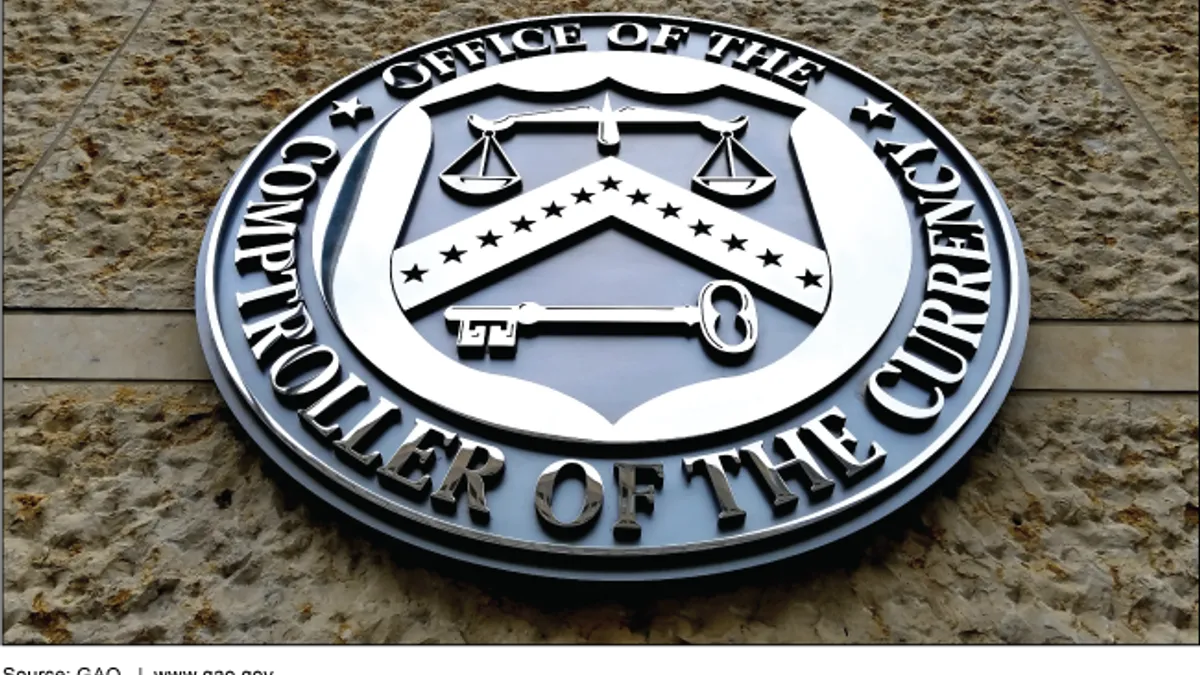UPDATE: Dec. 14, 2021: The Office of the Comptroller of the Currency on Tuesday issued a final rule rescinding the May 2020 rewrite of the Community Reinvestment Act.
Dive Brief:
- The Office of the Comptroller of the Currency (OCC) on Wednesday proposed rescinding the agency’s Trump-era rewrite of the Community Reinvestment Act (CRA) and returning to guidance in place since 1995.
- The agency is accepting comments through Oct. 29 and is aiming for a Jan. 1 effective date for the policy change, according to the notice of proposed rulemaking.
- Wednesday’s move follows through on a commitment the regulator made in July to join the Federal Reserve and Federal Deposit Insurance Corp. (FDIC) in issuing an interagency rule to modernize a 1977 law that requires banks to show how they invest in low-income areas.
Dive Insight:
Acting Comptroller Michael Hsu, on his first day leading the OCC in May, said he would review several key regulatory standards and pending matters but did not mention any by name at the time. He has, however, signaled a desire to seek more coordination with fellow regulators — particularly when it comes to chartering fintechs and cryptocurrency firms.
The OCC, in pushing its 372-page overhaul to the CRA in May 2020 — one day before then-Comptroller Joseph Otting announced his resignation, drew flak for not garnering the support of the Fed or the FDIC. FDIC Chair Jelena McWilliams said last year that while her agency "strongly supports the efforts to make the CRA rules clearer, more transparent, and less subjective," it "is not prepared to finalize the [May 2020] CRA proposal at this time.”
Hsu said the OCC is working to counteract that dissonance.
“At the agencies I’ve talked to … the objectives are shared, and because of that, I think we can get this done,” he told a conference held by the Consumer Bankers Association (CBA) in August. “There’s a lot of devilish details … [but] I’m hearing more differences of perspective on what’s going to be effective, what are the trade-offs. We’re not doing things in parallel and hoping to reconcile it. We’re doing it together each step of the way.”
The CBA, in a tweet Wednesday, said it was “good to see regulators take another step toward reforming this important but antiquated law.”
The May 2020 revision to the anti-redlining rule created new data collection requirements, evaluated banks based on areas where they have significant deposits rather than where their branches are, raised asset thresholds and added a distinction between small and intermediate-sized banks.
However, it earned criticism for being overly reliant on a single test score, and for the weight it gives to the amount banks invest in lower-income areas. For example, a bank could be compliant through a few large projects rather than its work in small-dollar lending to residents and small businesses.
The OCC said Wednesday it considered partially rescinding the 2020 rewrite but decided it would make compliance too complicated.
“Proposing yet another regulatory framework would impose undue burden on banks, their communities, and examiners who would need to learn and implement a new framework that was neither the June 2020 Rule, the 1995 Rules, nor the prospective interagency CRA rules,” the OCC said in the proposed rule.
The Otting-era OCC also took heat for the speed with which the May 2020 rewrite developed: It was finalized just six weeks after the public comment period closed, leaving doubt as to how much feedback was actually considered.
However, Hsu, too, made clear he sees time as critical in putting Wednesday’s proposed updates in force.
“The history of this rule has been one of a lot of delays, and I can't ignore that,” Hsu told American Banker. “There is kind of a central tendency to just kind of get mired in the details, and, well, we don't have time for that.”
Wednesday’s proposed rule indicated that perhaps some vestiges of the May 2020 rewrite may make their way into future interagency guidance — particularly, the rule’s list of activities that most frequently receive CRA credit.














